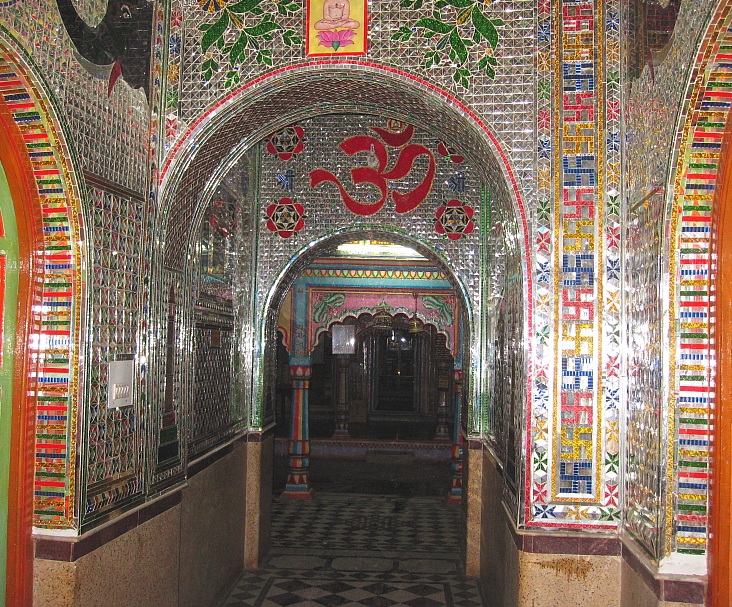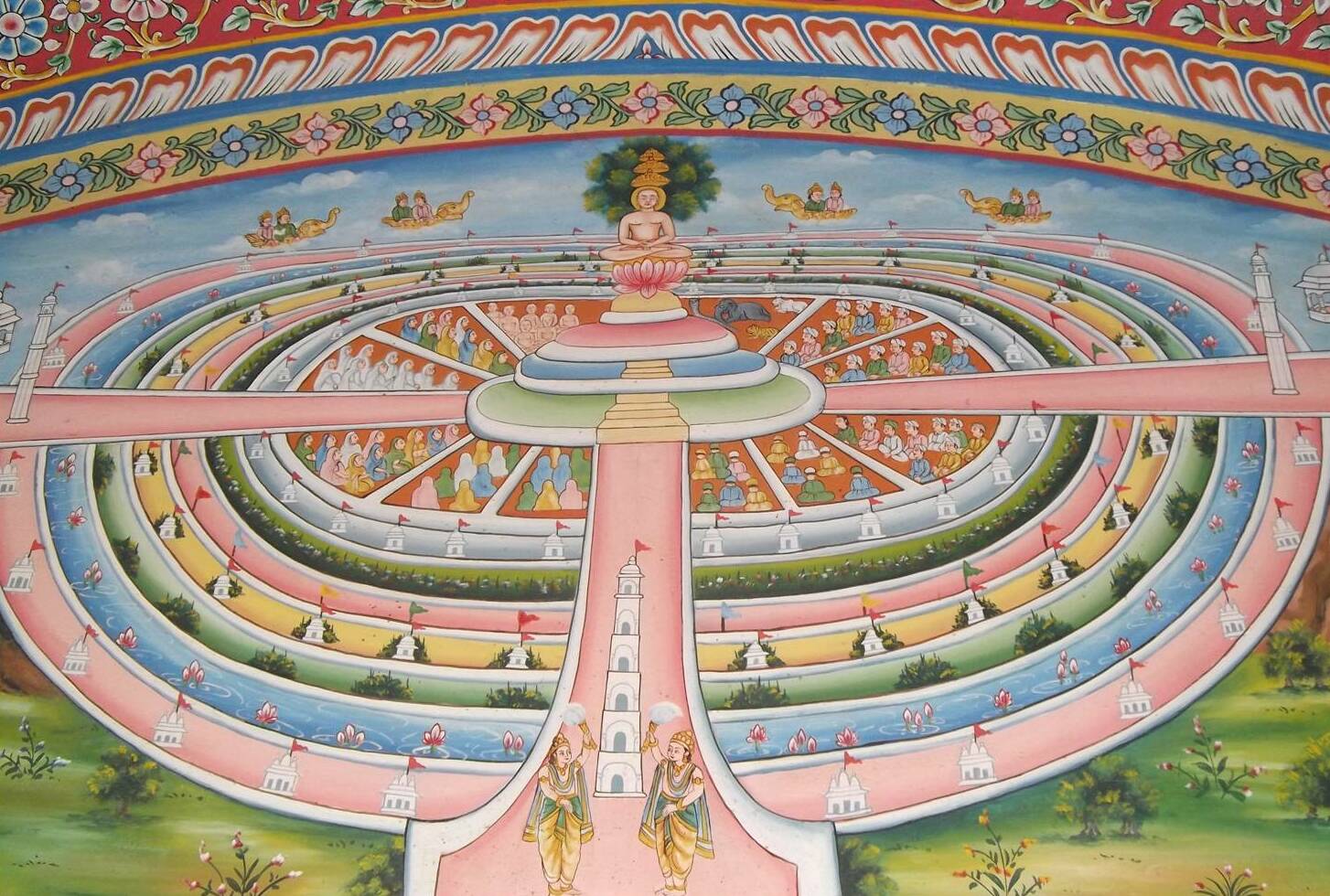|
Kanch Mandir
Kanch Ka Mandir ( hi, काँच मंदिर), literally Temple of Glass, is a famous Jain temple in Indore, built by Sir Seth Hukumchand Jain. The construction began sometime around 1903. There are quite a few other temples in India known as Kanch Ka Mandir, many of which are Jain temples. These include * Kanch Ka Mandir at Kanpur * Kanch Ka Mandir at Champanery * Kanch Ka Mandir at Shri Mahavirji * Kanch Ka Mandir at Chamatkarji * Kanch Ka Mandir at Shivpuri * Kanch Ka Mandir at Vrindavan * Kanch Ka Mandir at Indore Kanch Ka Mandir of Seth Hukumchand Jain Sir Seth Seth Hukumchand Jain was a prominent trader and one of India's industrial pioneer. He built a mansion at Itwaria Bazar called Shish Mahal and adjacent to it the Kanch Ka Mandir, both elegantly built using a white stone. Externally, the temple is built as a medieval mansion complete with a canopied balcony and a shikhara. The interior of Kanch Ka Mandir is entirely covered by glass panels and mosaics; incl ... [...More Info...] [...Related Items...] OR: [Wikipedia] [Google] [Baidu] |
Jainism
Jainism ( ), also known as Jain Dharma, is an Indian religion. Jainism traces its spiritual ideas and history through the succession of twenty-four tirthankaras (supreme preachers of ''Dharma''), with the first in the current time cycle being Rishabhadeva, whom the tradition holds to have lived millions of years ago, the twenty-third ''tirthankara'' Parshvanatha, whom historians date to the 9th century BCE, and the twenty-fourth ''tirthankara'' Mahavira, around 600 BCE. Jainism is considered to be an eternal '' dharma'' with the ''tirthankaras'' guiding every time cycle of the cosmology. The three main pillars of Jainism are ''ahiṃsā'' (non-violence), ''anekāntavāda'' (non-absolutism), and '' aparigraha'' (asceticism). Jain monks, after positioning themselves in the sublime state of soul consciousness, take five main vows: ''ahiṃsā'' (non-violence), '' satya'' (truth), '' asteya'' (not stealing), '' brahmacharya'' (chastity), and '' aparigraha'' (non-possessiveness) ... [...More Info...] [...Related Items...] OR: [Wikipedia] [Google] [Baidu] |
Samosharan
In Jainism, Samavasarana or Samosharana ("Refuge to All") is the divine preaching hall of the Tirthankara, stated to have more than 20,000 stairs in it. The word ''samavasarana'' is derived from two words, ''sama'', meaning general and ''avasara'', meaning opportunity. It is an important feature in Jain art. The Samavasarana seems to have replaced the original Jain stupa as an object of worship. Samavasarana Hall In samavasarana hall, the ''tirthankara'' sits on a throne without touching it (about two inches above it). Around the tirthankara sit the '' ganadharas'' (chief disciples). Living beings sit in the following order: *In the first hall, ascetics *In the second hall, one class of deva ladies *In the third hall, ''aryikas'' (nuns) and laywomen *In the next three halls, three other classes of deva ladies *In the next four halls, the four classes of devas (heavenly beings) *Men, in the eleventh hall *Animals, in the last hall According to Jain texts, there would be fou ... [...More Info...] [...Related Items...] OR: [Wikipedia] [Google] [Baidu] |
Jain Temples In Madhya Pradesh
Jainism ( ), also known as Jain Dharma, is an Indian religion. Jainism traces its spiritual ideas and history through the succession of twenty-four tirthankaras (supreme preachers of ''Dharma''), with the first in the current time cycle being Rishabhadeva, whom the tradition holds to have lived millions of years ago, the twenty-third ''tirthankara'' Parshvanatha, whom historians date to the 9th century BCE, and the twenty-fourth ''tirthankara'' Mahavira, around 600 BCE. Jainism is considered to be an eternal ''dharma'' with the ''tirthankaras'' guiding every time cycle of the cosmology. The three main pillars of Jainism are ''ahiṃsā'' (non-violence), ''anekāntavāda'' (non-absolutism), and ''aparigraha'' (asceticism). Jain monks, after positioning themselves in the sublime state of soul consciousness, take five main vows: ''ahiṃsā'' (non-violence), ''satya'' (truth), ''asteya'' (not stealing), ''brahmacharya'' (chastity), and ''aparigraha'' (non-possessiveness). These p ... [...More Info...] [...Related Items...] OR: [Wikipedia] [Google] [Baidu] |
Tourist Attractions In Indore
Tourism is travel for pleasure or business; also the theory and practice of touring, the business of attracting, accommodating, and entertaining tourists, and the business of operating tours. The World Tourism Organization defines tourism more generally, in terms which go "beyond the common perception of tourism as being limited to holiday activity only", as people "travelling to and staying in places outside their usual environment for not more than one consecutive year for leisure and not less than 24 hours, business and other purposes". Tourism can be domestic (within the traveller's own country) or international, and international tourism has both incoming and outgoing implications on a country's balance of payments. Tourism numbers declined as a result of a strong economic slowdown (the late-2000s recession) between the second half of 2008 and the end of 2009, and in consequence of the outbreak of the 2009 H1N1 influenza virus, but slowly recovered until the COVID-19 ... [...More Info...] [...Related Items...] OR: [Wikipedia] [Google] [Baidu] |
Ratha Yatra
Ratha Yatra (), or Chariot festival, is any public procession in a chariot. The term particularly refers to the annual Ratha Yatra in Odisha, Jharkhand, West Bengal and other East Indian states, particularly the Odia festival that involve a public procession with a chariot with deities Jagannath (Vishnu avatar), Balabhadra (his brother), Subhadra (his sister) and Sudarshana Chakra (his weapon) on a ratha, a wooden deula-shaped chariot. Ratha Yatra processions have been historically common in Vishnu-related (Jagannath, Rama, Krishna) traditions in Hinduism across India, in Shiva-related traditions, saints and goddesses in Nepal, with Tirthankaras in Jainism, as well as tribal folk religions found in the eastern states of India. Notable Ratha Yatras in India include the Ratha Yatra of Puri, the Dhamrai Ratha Yatra and the Ratha Yatra of Mahesh. Ratha Yatra of Guptipara and Santipur Hindu communities outside India, such as in Singapore, celebrate Ratha Yatra such as those as ... [...More Info...] [...Related Items...] OR: [Wikipedia] [Google] [Baidu] |
Kshamavani
Kshamavani ( sa, Kṣamāvaṇī) or "Forgiveness Day" is a day of forgiving and seeking forgiveness for the followers of Jainism. Digambaras celebrate it on the first day of ''Ashvin Krishna'' month of the lunar-based Jain calendar. Śvētāmbaras celebrate it on Samvatsari, the last day of the annual Paryushana festival. which coincides with the Chaturthi, 4th day of Shukla Paksha in the holy month of Bhadra. " Micchami Dukkadam" is the common phrase when asking for forgiveness. It is a Prakrit phrase meaning "May all the evil that has been done be fruitless". Observance On this sacred day, every member of the Jain community approaches everyone, irrespective of religion, and begs for forgiveness for all their faults or mistakes, committed either knowingly or unknowingly. Thus relieved of the heavy burden hanging over their head of the sins of yesteryears, they start life afresh, living in peaceful co-existence with others. Indeed, this day is not merely a traditional ritual, ... [...More Info...] [...Related Items...] OR: [Wikipedia] [Google] [Baidu] |
Mandala
A mandala ( sa, मण्डल, maṇḍala, circle, ) is a geometric configuration of symbols. In various spiritual traditions, mandalas may be employed for focusing attention of practitioners and adepts, as a spiritual guidance tool, for establishing a sacred space and as an aid to meditation and trance induction. In the Eastern religions of Hinduism, Buddhism, Jainism and Shinto it is used as a map representing deities, or especially in the case of Shinto, paradises, kami or actual shrines. A mandala generally represents the spiritual journey, starting from outside to the inner core, through layers. Hinduism In Hinduism, a basic mandala, also called a ''yantra'', takes the form of a square with four gates containing a circle with a center point. Each gate is in the general shape of a T. Mandalas often have radial balance. A ''yantra'' is similar to a mandala, usually smaller and using a more limited colour palette. It may be a two- or three-dimensional geometric compo ... [...More Info...] [...Related Items...] OR: [Wikipedia] [Google] [Baidu] |
Tirtha (Jainism)
In Jainism, a ''tīrtha'' ( sa, तीर्थ "ford, a shallow part of a body of water that may be easily crossed") is used to refer both to pilgrimage sites as well as to the four sections of the ''sangha''. A ''tirtha'' provides the inspiration to enable one to cross over from worldly engagement to the side of ''moksha''. Jain ''tirthas'' are located throughout India. Often a ''tirtha'' has a number of temples as well as residences (dharmashala) for the pilgrims and wandering monks and scholars. Types ''Tirtha'' sites include: * ''Siddhakshetra''s or site of ''moksha'' liberation of an '' arihant'' (''kevalin'') or Tirthankaras like Ashtapada Hill, Shikharji, Girnar, Pawapuri, Palitana, Mangi-Tungi and Champapuri (capital of Anga) * ''Atishayakshetra''s where divine events have occurred like Mahavirji, Rishabhdeo, Kundalpur, Aharji etc. * ''Puranakshetra''s associated with lives of great men like Ayodhya, Vidisha, Hastinapur, and Rajgir * ''Gyanakshetra'': associated ... [...More Info...] [...Related Items...] OR: [Wikipedia] [Google] [Baidu] |
Tirthankara
In Jainism, a ''Tirthankara'' (Sanskrit: '; English: literally a ' ford-maker') is a saviour and spiritual teacher of the '' dharma'' (righteous path). The word ''tirthankara'' signifies the founder of a '' tirtha'', which is a fordable passage across the sea of interminable births and deaths, the '' saṃsāra''. According to Jains, a ''Tirthankara'' is an individual who has conquered the ''saṃsāra'', the cycle of death and rebirth, on their own, and made a path for others to follow. After understanding the true nature of the self or soul, the ''Tīrthaṅkara'' attains '' Kevala Jnana'' (omniscience). Tirthankara provides a bridge for others to follow the new teacher from ''saṃsāra'' to ''moksha'' (liberation). In Jain cosmology, the wheel of time is divided in two halves, Utsarpiṇī' or ascending time cycle and ''avasarpiṇī'', the descending time cycle (said to be current now). In each half of the cosmic time cycle, exactly twenty-four ''tirthankaras'' grace t ... [...More Info...] [...Related Items...] OR: [Wikipedia] [Google] [Baidu] |






